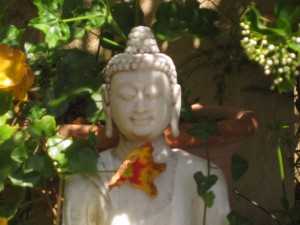Man has always been interested in living longer.
All cultures and spiritual traditions make some provision to extend life. We are guaranteed immortality by following the moral guidelines of numerous religious teachings. We construct symbols of immortality like the Great Wall, the pyramids, the Eiffel tower, Mona Lisa or Declaration of Independence to continue our lives infinitely into the future.
Over the last 100 years there has been a 30-year improvement in life expectancy in the developed world.
15,000 years ago, our hunter-gathering ancestors lived about 25 years, and by 1800 this had only improved to about 40 years. By 1900 the average person could expect to live to age 50. This 10-year improvement from 1800 occurred because of (1) better nutrition due to improved farming techniques that increased agricultural and dairy production, and (2) early public health initiatives, specifically cleaner food and water.
The amazing increase in life expectancy from 1900 (it now stands over 80 for women and over 75 for men) can be attributed to improvements in healthcare. This occurred in 2 distinct phases–the first being the continuing reduction, and now treatment of infectious disease. By the early 1800’s Edward Jenner had shown that smallpox could be prevented by variolization–a primitive form of vaccination. In the 1860’s Louis Pasteur proved there were microorganisms in the air that could be killed by sterilization. Around the same time Joseph Lister introduced the concept of chemical antisepsis. These discoveries presaged the coming advances in surgery.
With light shed on the cause of infectious disease, numerous vaccines were developed against rabies (1885), plague (1897), diphtheria (1923), pertussis (1926), tuberculosis (1927), yellow fever (1935), polio (1955), measles (1964), mumps (1967), rubella (1970), hepatitis B (1981), H1N1 influenza (2009) as well as the seasonal flu vaccines. After the discovery of antibiotics in the 1930’s and 1940’s, mortality from infectious diseases rapidly declined to its current levels by 1960.
The second improvement in lifespan caused by healthcare occurred more recently. This phase has been characterized by intensive, and very expensive medical therapies. Since 1960, deaths from heart disease have dropped by over 50%, accounting for 70% of the seven-year increase in life expectancy between 1960 and 2000. An additional 19% of the increase is the result of infant mortality reductions through improved neonatal medical care for low birth weight infants.
The remaining 10% of the increase in lifespan is the reduction of mortality by improving trauma care–specifically by treating within the “golden hour” learned in the Vietnam War, through fewer deaths from pneumonia and influenza with the use of powerful antibiotics and vaccination, pre-emptive critical care and artificial ventilation, and through a slight decrease in cancer mortality.
The 50% reduction in deaths from heart disease is consistent in the most of western world. Researchers in the U.S. have attributed about 47% of this reduction to specific medical therapies, Re-vascularization by coronary artery bypass or stenting makes a surprisingly small contribution. A decrease in the prevalence of major risk-factors was responsible for two-thirds of the total decline in mortality. It is estimated that 80% of premature deaths from cardiovascular disease are preventable. While cholesterol and blood pressure lowering drugs are beneficial, lifestyle changes such as smoking cessation, eating healthy, losing weight and increasing physical activity remain the keys.
What do centenarians tell us?
Unfortunately we have all seen individuals who are living longer through modern health advances, but not living well. Processes that extend life often decrease the quality of life. So the real question of longevity goes beyond life span to how we remain optimally healthy and actively involved in life. By analyzing populations that have a lot of active, elderly people (often over 100 years old), a few common denominators of longevity have been identified.
Heredity or genetics
One of the oldest populations lives on the island of Okinawa where 29% of the people live to 100 years. The ongoing Okinawa Centenarian Study (watch video below) has discovered “human longevity genes” in the families of centenarians. These genes seem to give them a lower risk for inflammatory and auto-immune diseases, and actually slow the aging process. The study has found that those blessed with the genes live almost 12 years longer than those without.It is now believed that genetics is responsible for 30 to 50% of longevity. Unfortunately this means that some of the determinants of long life are not under an individual person’s control. Unless of course you pick your parents.
Diet
The diets of all these populations are composed of unprocessed foods, are low in animal and saturated fats, and provide less than 2,000 calories daily.
Alcohol consumption
Physical activity
Sexual activity
Social environment
Physical environment
Spiritual environment



